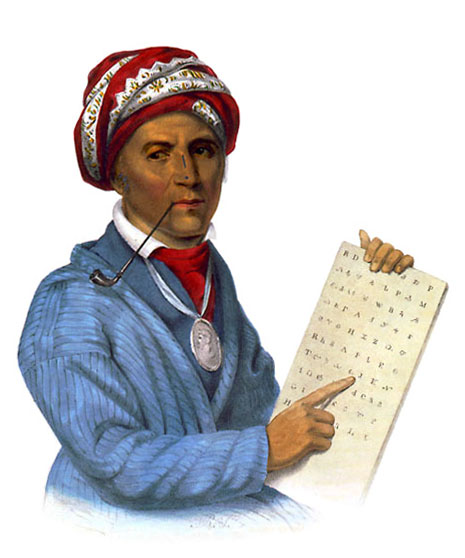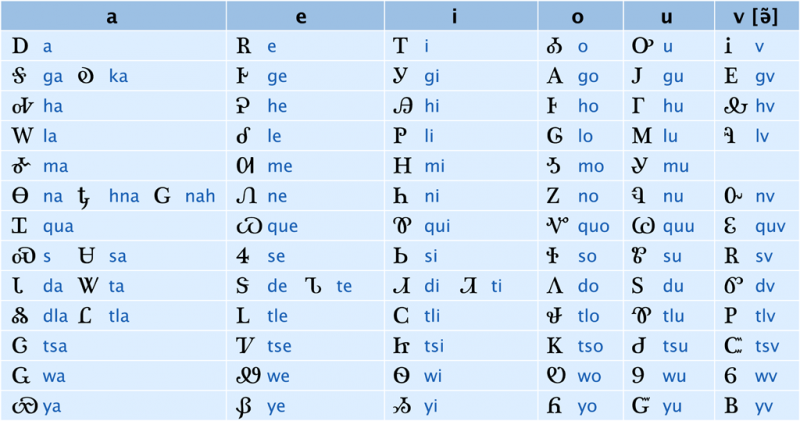The Cherokee language is written in a syllabary, a kind of alphabet in which each character represents a complete syllable. In English, each character (or letter) usually represents a single phoneme, or sound. The English language has far too many syllables (tens of thousands!) for an English syllabary to be useful, but the Cherokee syllabary is a practical way of writing down the spoken Cherokee language.
The syllabary was developed by a Cherokee silversmith named Sequoyah, also known as George Guess, between 1809 and 1821. Sequoyah originally wanted simply to be able to write his own name, so that like other silversmiths he could sign his work. He first tried pictographs, characters that visually represent entire words (as Chinese characters do), but found that this would have required thousands of symbols. Instead, he designed a symbol for each syllable in the spoken Cherokee language.
Some Cherokee leaders opposed his work, believing that written language was at best worthless and at worst evil. They said that white man's words dried up and blew away like leaves when the words no longer suited them. Sequoyah, perhaps making fun of this idea, called his syllabary "talking leaves."
But the syllabary quickly caught on. Schools began teaching it almost immediately, and the Cherokee Nation officially adopted it in 1825. According to some accounts, by 1830, as many as 90 percent of the Cherokee were literate in their own language. Books, religious texts, almanacs, and newspapers were published using the syllabary, including the Cherokee Phoenix, the newspaper of the Cherokee Nation published between 1828 and 1834, and the Bible, one of the first books to be translated into Cherokee.
Today, some Cherokee are working to revive both the language and the syllabary, and a number of schools and colleges offer courses in Cherokee.

